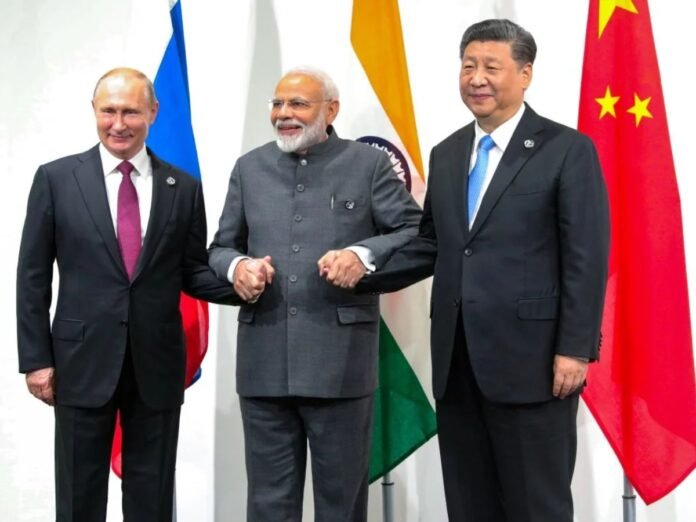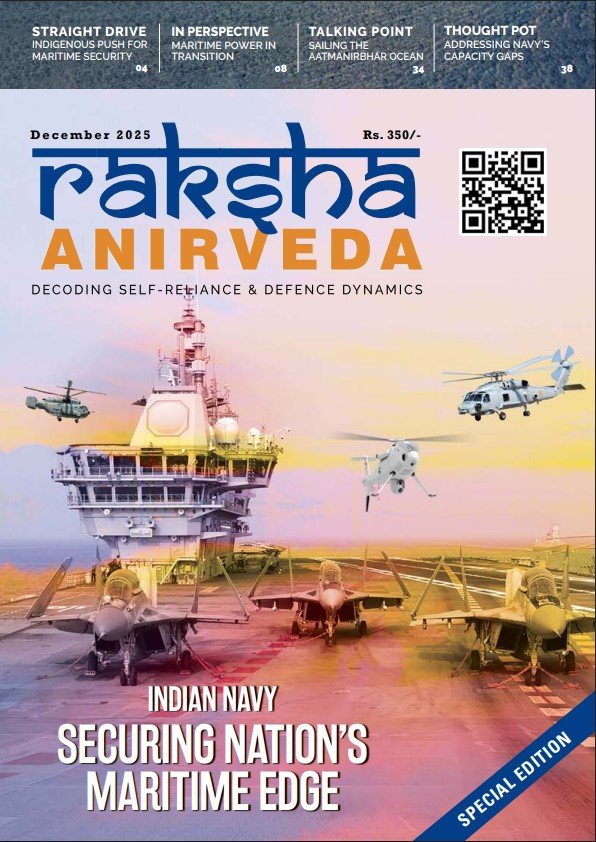The Shanghai Cooperation Organisation’s (SCO) Summit in Tianjin in China, has emerged as the forum, where old enmities were forgotten and new ties amended, all due to theatrics of one single person, i.e. the US President Donald Trump.
Though the focus of the SCO Summit was bilateral and multilateral issues, yet the most important output was the meetings between the Indian Prime Minister Narendra Modi, Russian President Vladimir Putin and the host Chinese President Xi Jinping.
Apart from optics, the warmth between the three leaders was evident at every moment. The special treatment meted out to PM Modi in comparison to his Pakistani counterpart stands in stark contrast.
Modi’s visit to Tianjin for the summit was days after the US doubled tariffs on Indian exports to 50%, citing New Delhi’s refusal to stop buying Russian oil. And just a day after a federal appeals court ruled that limited his authority to impose sweeping tariffs.
President Trump on Sunday (August 31) defended his controversial tariff policies, calling them vital to the country’s economic and military security. He made the comments in a post on Truth Social, “Without Tariffs, and all of the TRILLIONS OF DOLLARS we have already taken in, our Country would be completely destroyed, and our military power would be instantly obliterated,” Trump wrote.
The Shanghai Cooperation Organisation’s (SCO) Summit in Tianjin in China, has emerged as the forum, where old enmities were forgotten and new ties amended, all due to theatrics of one single person, i.e. the US President Donald Trump
The post came after the US Court of Appeals for the Federal Circuit ruled 7-4 that Trump overstepped his authority under the International Emergency Economic Powers Act (IEEPA) when imposing broad tariffs on nearly every country. The court, however, left in place certain targeted protectionist measures.
Before the SCO summit experts were awaiting any breakthrough in Indo-China, Indo-Russia and Russia-China relations and their leaders’ resolve to extend BRICS scope and reach, stressing multilateralism and also trying to find a way to replace the US dollar as the global currency.
As Modi began his trip, Donald Trump’s trade adviser Peter Navarro stepped up his attack on India, claiming on X that the country had become an “oil money laundromat for the Kremlin”.
India has consistently defended its Russian oil purchases, saying they are vital to keep energy costs stable in the vast developing economy, help steady prices globally and comply with international law. Modi has tried to strike a balance over the Ukraine war, refusing to criticise Moscow directly while urging peace.
The concept behind RIC troika was simple: Russia, India and China should form a triangle, and work together to counter the growing Western hegemony. Initially, both India and China kept their distance from the proposal, especially because of the differences between them. Despite reservations, the foreign ministers of the three countries held a trilateral meeting in September 2003 on the sidelines of the United Nations General Assembly (UNGA)
The economic blow of the tariffs is immense. The US is India’s biggest export market at $86.5bn a year, and two-thirds of that – about $60.2bn in goods – is subject to the new duties, hitting labour-intensive sectors from textiles to jewellery.
Even before the tariffs, India had been cautiously warming to China as a source of investment and technology with hopes of boosting trade.
Relations between the two neighbours froze after a deadly clash along the disputed Himalayan border in 2020 but began to thaw when Modi and Xi met in person for the first time in four years at a BRICS summit in Russia in October, last. But PM Modi’s mind will also be on his country’s bust-up with America and how India should respond.
In just a few months Donald Trump, America’s president, has found two ways to humiliate the Indian government: first, by appearing to side with Pakistan, an old adversary; second, by whacking India’s exports with extortionate tariffs. The falling out between America and India has prompted the emerging economic giant to think deeply about its present course.
Talks between the India and China are now moving to economic matters. Since the clashes in 2020, India has turned away much Chinese investment, and it has refused to grant visas to some Chinese executives. Yet during this period the amount India imports from China has only gone up.
Last year, India bought about $114bn-worth of goods from its northern neighbour, about 75% more than five years ago (only about $14bn-worth of stuff went the other way). Much of what it buys are inputs that are essential to the Indian industry.
Like India, China had also maintained a distance from the RIC troika. However, China is also showing interest in reviving the RIC, potentially because of the recent trade policies of the US under Donald Trump. Notably China has openly come out in support of India after the US imposed 50 per cent tariffs on the latter for procuring Russian oil
Flow of money and know-how from China could bolster Indian industry, so that it could develop its own advanced-manufacturing sector and reduce reliance on imports. India’s government understands this, but had been loath to relax investment curbs while trade negotiations with Mr Trump were still going on. With those talks now in the doldrums, a slightly freer stance on China is back on the cards.
There is yet one more way in which India might respond to its humbling at the hands of Mr Trump. It could choose to accelerate long-needed changes at home that might help it resist such bullying down the line.
On the other hand, with India and China improving ties, and considering that the two countries are already closer to Russia, it could potentially lead to the revival of the RIC troika (Russia, India, and China).
The RIC troika was first conceptualised by former Russian Prime Minister Yevgeny Primakov in the 1990s, a time when Russia was trying to find its place on the global stage following the collapse of the Union of Soviet Socialist Republic (USSR). In the early 2000s, it was institutionalised, and it has held around 20 ministerial-level consultations since then.
The concept behind RIC troika was simple: Russia, India and China should form a triangle, and work together to counter the growing Western hegemony. Initially, both India and China kept their distance from the proposal, especially because of the differences between them. Despite reservations, the foreign ministers of the three countries held a trilateral meeting in September 2003 on the sidelines of the United Nations General Assembly (UNGA).
In the late 90s, India was opening its economy to the globe and was trying to improve ties with the West, particularly the US. Thus, India kept its distance from RIC. Notably, India conducted the Pokhran-II nuclear test in 1998, a move that was strongly condemned by China, which was another reason why India was never serious about it.
Russia, India and China account for USD 53.9 trillion in global GDP (PPP), which is around 33 per cent of the world’s total output. The export of the three countries tops USD 5 trillion, with USD 4.7 trillion in foreign reserves, according to a report by The Economic Times
Like India, China had also maintained a distance from the RIC troika. However, China is also showing interest in reviving the RIC, potentially because of the recent trade policies of the US under Donald Trump. Notably China has openly come out in support of India after the US imposed 50 per cent tariffs on the latter for procuring Russian oil.
For long, Russia has looked for the revival of the RIC, and is holding discussions with India and China for this. Earlier this year, Russia said the three countries are important partners, apart from being the founding members of the BRICS.
Russia, India and China account for USD 53.9 trillion in global GDP (PPP), which is around 33 per cent of the world’s total output. The export of the three countries tops USD 5 trillion, with USD 4.7 trillion in foreign reserves, according to a report by The Economic Times.
All of them are also nuclear-powered, and they have always pushed for a multipolar world, opposing unilateralism. Their combined military spending stands at USD 549 billion, and they also consume 35 per cent of the total global energy.
However, experts feel there is still time for the RIC to redraw the global order. But all in all, the Tianjin summit definitely provided an opportunity to Mr Modi to up India’s diplomatic game.
-The writer is a New Delhi-based senior commentator on international and strategic affairs, environmental issues, an interfaith practitioner, and a media consultant. The views expressed are personal and do not necessarily carry the views of Raksha Anirveda






